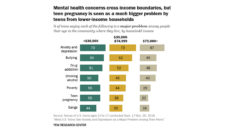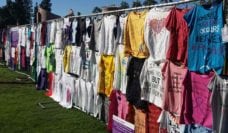Intimate partner violence (IPV) is a critical public health problem that disproportionately affects the health and wellbeing of women and girls. The Centers for Disease Control and Prevention define IPV as “any physical, sexual, or psychological harm by a current or former partner or spouse.” There are four types of IPV – physical (e.g., hitting or kicking); sexual (e.g., sexual touching or forced sex); stalking (e.g., repeated, unwanted attention); and psychological (e.g., belittling or humiliation). To capture the prevalence and health consequences associated with IPV in the United States, the CDC’s National Center for Injury Prevention and Control conducts the National Intimate Partner and Sexual Violence Survey (NISVS), an ongoing survey that assesses experiences of violence among a nationally-representative sample of adult women and men. According to the 2015 NISVS, 43.6 million women (36.4%) women experienced IPV in their lifetime.
Preventing IPV is an important first step made challenging by numerous associated risk factors across multiple domains and levels. A number of studies have shown that individual, relationship, and, more recently, community-level risk factors can increase one’s chances of experiencing or perpetrating IPV. Fewer studies have examined societal-level risk factors in the United States. Societal-level factors are characteristics of the social climate that create an environment in which IPV is encouraged or prohibited. Examining societal-level predictors of IPV may help inform the development of “upstream” interventions that seek to reduce IPV incidence.
Gender inequality, “the extent to which men have a better status than women” has gained attention as a societal-level factor for violence in global settings but few studies have been conducted in the United States. Recognizing this research gap, we sought to examine the association between gender inequality and IPV prevalence among adult women and men at the state-level. We collected data on maternal mortality, teen birth rates, government representation, educational attainment, and labor force participation to create a gender inequality score for each state. We then combined state-level gender inequality scores with the recently published estimates of IPV prevalence from the 2010-2012 NISVS. With these data, we were able to ask if gender inequality was associated with IPV prevalence reported by adult women and men across states.
While the development of these initiatives are steps in the right direction, we must also ensure that these initiatives are enforced in order to create an environment in which all women can thrive free from violence.
The inequality index we used assesses how much human development and achievement was lost due to gender disparities. While the United States consistently ranks below other countries when it comes to gender equality, we found great variation in gender inequality across states. Therefore, when considering women’s wellbeing and experiences of gender disadvantage, place does matter. Also, we found that states with higher levels of gender inequality also had a higher prevalence of women reporting psychological IPV than men.
Our findings are similar to another study analyzing the relationship between gender inequality and adolescent dating violence across states. In particular, Gressard and colleagues found that gender inequality may be a predictor of teen dating violence among US female adolescents, but not among male adolescents.
Together these studies highlight that more needs to be done to address gender inequality and disadvantage in the US. Upstream interventions fostering gender equality at the state-level should may help reduce IPV incidence experienced by women. Examples of programmatic initiatives addressing gender inequality include closing the gender wage gap, changing gender-based norms and attitudes, and promoting women’s political participation. While the development of these initiatives are steps in the right direction, we must also ensure that these initiatives are enforced in order to create an environment in which all women can thrive free from violence.
Photo by Volkan Olmez on Unsplash














